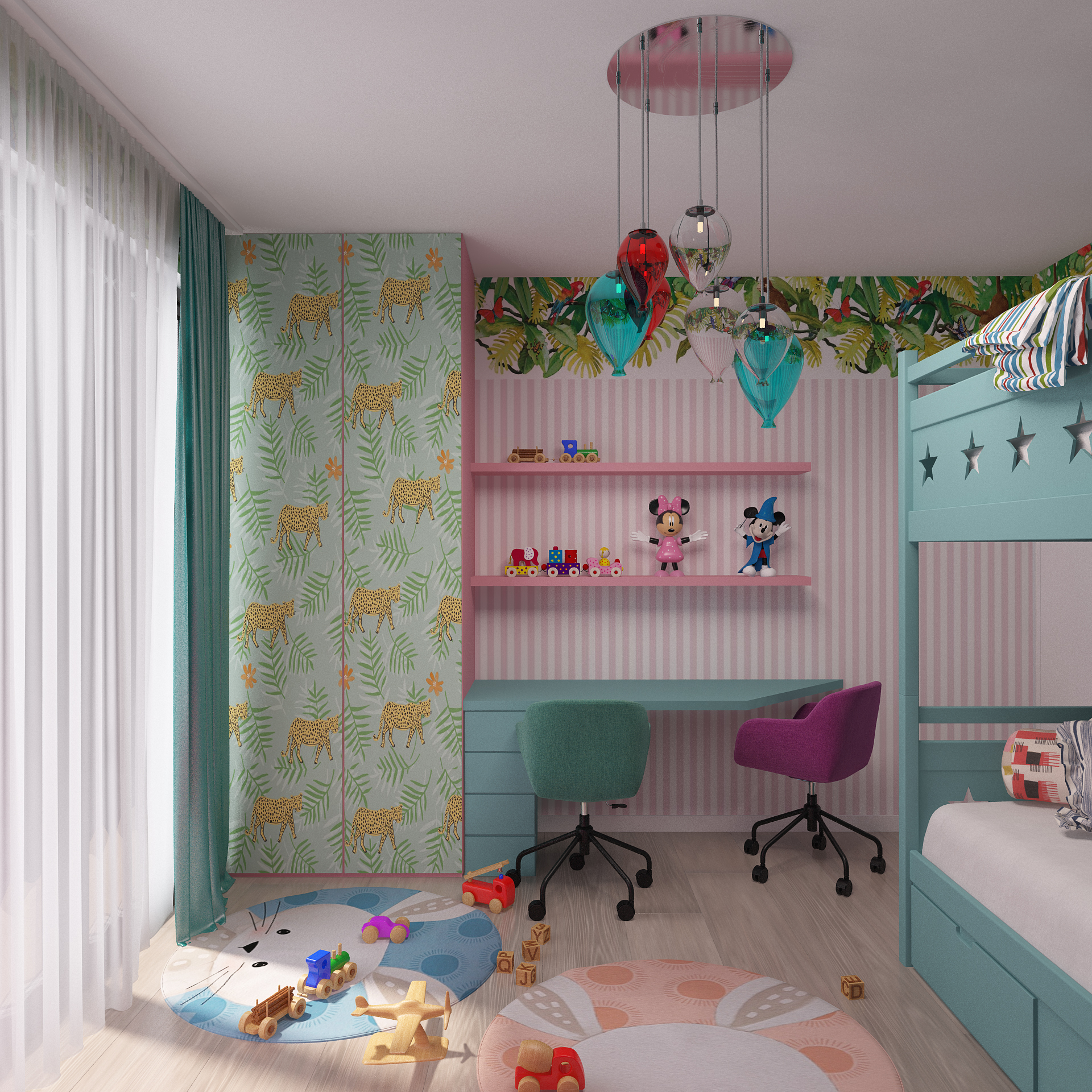
Designing a Child’s Room
The Evolution of a Space
A child’s room is never just a room. It is the first landscape their body remembers outside a mother’s arms. The first geography their mind begins to read. And the first place their inner world finds shape, color, and sound.
Designing a child’s room is not about trend or appearance. It’s about safety, evolution, emotional clarity, and freedom.
Because every corner, texture, and light source will slowly build the lenses through which this human being will one day translate life.
From Nursery to Teenage Haven: The Evolution of a Space
Every stage of childhood brings a different need, a different rhythm, a different emotional field. And the space they inhabit must shift with it. This room becomes:
- A sanctuary for sleep
- A playground for creativity
- A hub for learning
- A lounge for connection
- A mirror of their personality
To design such a room is not about making it impressive — it’s about making it fluid, safe, and true.
The First Room: The Nursery
This space should be: soft in color, natural in material, simple in shape, calm in texture and filled with organic light and gentle sound
It is the place where the body begins to feel safe outside the womb. It must be sensory balanced, not overstimulated. This is not the place for bright themes or loud patterns.
Early Childhood: Play, Exploration, Containment
As the child begins to explore, the room should allow free movement and visible boundaries: a low, soft bed for autonomy; open shelves for toy rotation; a small table for drawing, imagination, and self-expression
Avoid themed designs. No Cinderella. No Spiderman. These may seem joyful but they narrow the psyche, creating early and unnecessary identification with limited roles. Childhood is for expansion, not imitation.
Middle Childhood: Study and Structure
Now the child needs: a defined study area with natural light, a reading corner, visible organization (not just hidden storage), a place to host a friend or two in semi-private safety.
Structure is important — it builds clarity of mind. But it must come with freedom of choice in layout, art, and comfort items.
Teenage Years: Identity and Intimacy
Here, the room becomes a direct extension of the inner world. Let the teen participate fully in design: wall colors, textures, furniture placement, lighting style, sound equipment, comfort chairs, lounge space.
A personal bathroom, if possible, becomes essential. It is a gateway into body awareness, hygiene habits, and privacy boundaries.
Let them curate the space. Let them change it. Let them contradict themselves. This is how authenticity is born.
What If There’s Only One Room to accommodate all the needs?
Then zoning is your tool.
- Sleep zone with calm lighting, no desk nearby
- Study zone with ergonomic setup, storage, and daylight
- Play or hangout zone with cozy seating, flexible arrangements
Define each space subtly — with carpet texture, color accents, lighting layers. Let the child know where each function lives.
The Living Room: The Family Field
The home is not just bedrooms and kitchens. The living room should be: emotionally open, soft in layout and comfort-forward. This is the space where feelings get named. Where parents model listening. Where the child is not corrected — but heard.
Design this space not to impress, but to invite.
Color. Shape. Function. Safety.
- Colors should evolve from soft earth tones in early years to more self-chosen hues in adolescence
- Shapes should follow organic curves and calm geometry
- Functionality is about ease of access, comfort, and adaptability
- Safety includes physical (rounded corners, solid furniture) and emotional (privacy, identity, respect)
Let the Child Speak
Every child should have the right to co-create their space. A designer must listen to the child, mediate the parents’ projections and understand the emotional need beneath each request.
Parents want the best — but sometimes, they unconsciously recreate their own unmet needs in their child’s room. A good designer helps untangle this.
The Room Must Change
This is the only room in the house that must evolve constantly. Because the child is not a brand. They are a moving constellation of questions, feelings, and dreams.
Do not fix them in a theme. Do not lock them in a color. Do not silence their evolution. Let the room shape them as much as they shape the room.
And when they are grown — they will carry that space in their body. A quiet memory that says:
“I was seen. I was safe. I was allowed to become who I really am.”
written by Amalia Predescu
copyright@DekoreStudio
